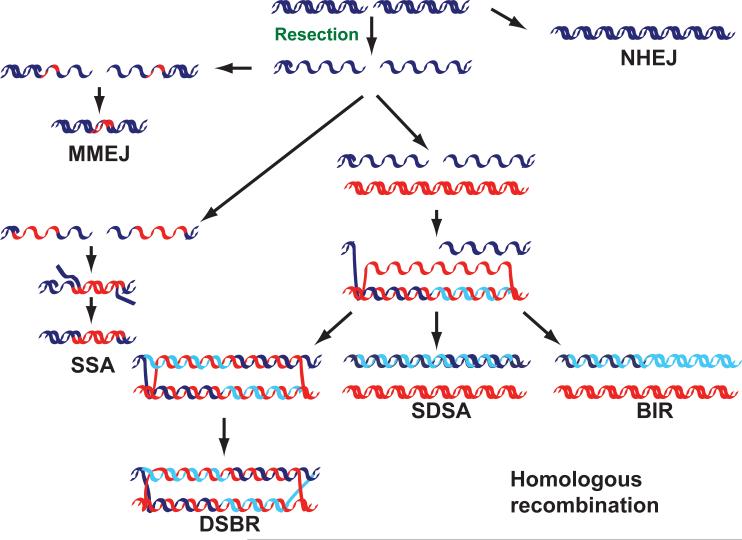Figure 1.
The repair of DNA double-strand breaks (DSBs). DSBs can be repaired using several different mechanisms. Both ends can be simply rejoined with little or no further processing (nonhomologous end-joining; NHEJ) or can be repaired using homologous sequences (red DNA; homologous recombination) after 5′–3′ degradation has occurred (resection). The 3′-OH group exposed after resection can be used to prime DNA synthesis using a homologous region as a template after DNA strand invasion. The newly synthesized DNA (light blue) can then be joined with the 5′ end of the resected strand forming a double Holliday junction (double-strand break repair; DSBR), or can be displaced and reannealed (synthesis-dependent strand annealing; SDSA); or DNA synthesis can continue to the end of the chromosome (break-induced replication; BIR). If two homologous regions flank the DSB, they can anneal after being exposed by DNA resection (single-strand annealing; SSA), which causes the deletion of the intervening region. An additional mechanism that shares components with both SSA and NHEJ, and uses short homology stretches (usually 2–3 bp) flanking the DSB, can also be used (microhomology-mediated end-joining; MMEJ). The chromosomal consequences of aberrant use of each repair mechanism are shown in the red boxes.

